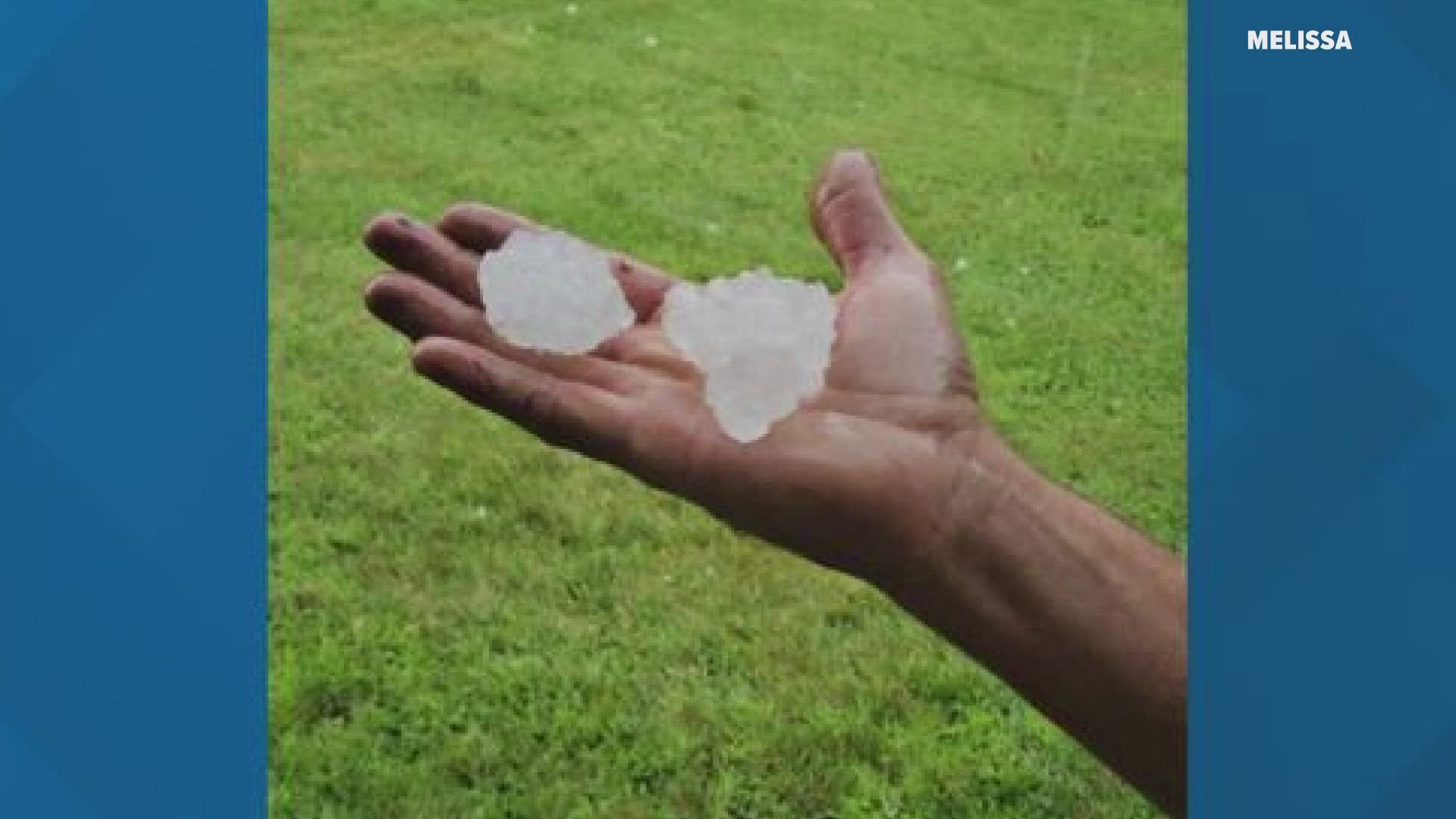PENOBSCOT COUNTY, Maine — Multiple people in Penobscot County were impacted by lightning during severe storms on Sunday.
In Carmel, a Five Road resident said lightning struck his garage or nearby ground rods, and he felt the shock through his feet, according to the Carmel Fire Department. The man was standing just outside of his garage at the time, and the ground was wet, the fire department said.
EMT officials responded around 3:45 p.m. to evaluate the man, who was not taken to a hospital, according to the fire department.
Around the same time, near Garland Pond on Route 94 in Garland, a resident reported that his home was struck by lightning, Garland Assistant Fire Chief Hank Burrill told NEWS CENTER Maine. The lightning scorched down through the side of a wall and into a corner closet, according to Burrill.
"Good thing the homeowner was home. It could have started a bigger fire," Burrill said, adding the homeowner was able to quickly extinguish it with a garden hose. Burrill said the home sits on a ledge on a hill.
The U.S. Centers for Disease Control and Prevention lists the following lightning safety precautions on its website:
- If the weather forecast calls for thunderstorms, postpone your trip or activity.
- Remember: When thunder roars, go indoors. Find a safe, enclosed shelter. Safe shelters include homes, offices, shopping centers, and hard-top vehicles with the windows rolled up.
- If you are caught in an open area, act quickly to find adequate shelter. The most important action is to remove yourself from danger. Crouching or getting low to the ground can reduce your chances of being struck but does not remove you from danger. If you are caught outside with no safe shelter nearby, the following actions may reduce your risk:
- Immediately get off elevated areas such as hills, mountain ridges, or peaks.
- Never lie flat on the ground. Crouch down in a ball-like position with your head tucked and hands over your ears so that you are down low with minimal contact with the ground.
- Never shelter under an isolated tree.
- Never use a cliff or rocky overhang for shelter.
- Immediately get out of and away from ponds, lakes, and other bodies of water.
- Stay away from objects that conduct electricity (such as barbed wire fences, power lines, or windmills).
- If you are in a group during a thunderstorm, separate from each other. This will reduce the number of injuries if lightning strikes the ground.
- If you are out in the open water and a storm rolls in, return to shore immediately.
- Avoid open vehicles such as convertibles, motorcycles, and golf carts.
- Avoid open structures such as porches, gazebos, baseball dugouts, and sports arenas. These structures won’t protect you from lightning.
- Stay away from open spaces such as golf courses, parks, playgrounds, ponds, lakes, swimming pools, and beaches. Seek shelter immediately.
- Stay away from tall structures, such as telephone poles and trees; lightning tends to strike the tallest object around.
Safety precautions indoors
Being indoors does not automatically protect you from lightning. In fact, about one-third of lightning-strike injuries occur indoors. Here are some tips to keep safe and reduce your risk of being struck by lightning while indoors.
- Avoid contact with water during a thunderstorm. Do NOT bathe, shower, wash dishes, or have any other contact with water during a thunderstorm. Lightning can travel through plumbing.
- Avoid using electronic equipment of all types. Do NOT use anything connected to an electrical outlet, such as computers, laptops, game systems, washers, dryers, or stoves. Lightning can travel through electrical systems and radio and television reception systems.
- Avoid using corded phones. Corded phones are NOT safe to use during a thunderstorm. However, cordless or cellular phones are safe to use during a storm.
- Do NOT lie on concrete floors or lean on concrete walls during a thunderstorm. Lightning can travel through any metal wires or bars in concrete walls or flooring.

